Design and control of warehouse order picking: a literature review
René de Koster1, Tho Le-Duc, Kees Jan Roodbergen
RSM Erasmus University
P.O. box 1738, 3000 DR Rotterdam, The Netherlands
phone: +31-10-4081719
fax: +31-10-4089014
T
Please refer to this article as:
De Koster, R., Le-Duc, T., and Roodbergen, K.J. (2007), Design and control of warehouse order
picking: a literature review. European Journal of Operational Research 182(2), 481-501.
1 corresponding author, rkoster@rsm.nl
1
�
Design and control of warehouse order picking: a literature review
Abstract
Order picking has long been identified as the most labour-intensive and costly activity for almost every
warehouse; the cost of order picking is estimated to be as much as 55% of the total warehouse operating
expense. Any underperformance in order picking can lead to unsatisfactory service and high operational cost
for its warehouse, and consequently for the whole supply chain. In order to operate efficiently, the order-
picking process needs to be robustly designed and optimally controlled. This paper gives a literature overview
on typical decision problems in design and control of manual order-picking processes. We focus on optimal
(internal) layout design, storage assignment methods, routing methods, order batching and zoning. The
research in this area has grown rapidly recently. Still, combinations of the above areas have hardly been
explored. Order-picking system developments in practice lead to promising new research directions.
Keywords: Order picking; Warehouse management; Logistics
1 Introduction
As more companies look to cut costs and improve productivity within their warehouses and distribution
centres, picking has come under increased scrutiny. Order picking - the process of retrieving products from
storage (or buffer areas) in response to a specific customer request - is the most labour-intensive operation in
warehouses with manual systems, and a very capital-intensive operation in warehouses with automated
systems (Goetschalckx and Ashayeri 1989, Drury 1988, Tompkins et al. 2003). For these reasons,
warehousing professionals consider order picking as the highest-priority area for productivity improvements.
Several recent trends both in manufacturing and distribution have made the order-picking design and
management become more important and complex. In manufacturing, there is a move to smaller lot-sizes,
point-of-use delivery, order and product customisation, and cycle time reductions. In distribution logistics, in
order to serve customers, companies tend to accept late orders while providing rapid and timely delivery
within tight time windows (thus the time available for order picking becomes shorter). Many smaller
warehouses are being replaced by fewer large warehouses to realise economies of scale. In these large
warehouses, the daily pick volume is large and the available time window is short. In order to be more
responsive to customers, many companies have adopted a postponement strategy (Van Hoek 2001) leading to
various value-adding activities (like kitting, labelling, product or order assembly, customised packaging or
palletisation) that take place in the distribution centre and which have to be scheduled and integrated in the
order-picking process. Warehouses are also involved in recovering products, materials, and product carriers
from customers in order to redistribute them to other customers, recyclers, and original-equipment
manufacturers (De Koster et al., 2002).
The organisation of order-picking operations immediately impacts the distribution centre’s and thereby the
supply chain’s performance. Between the time an order is released to the warehouse and the time it takes to
reach its destination, there is ample opportunity for errors in both accuracy and completeness, not to mention
2
�
time lost. There is also room for improvement. Industry has come up with innovative solutions, making it
possible to attain productivity up to 1,000 picks per person hour. Science is also progressing rapidly. Over the
last decades, many papers have appeared studying order picking processes. New problems have been studied
and new models have been developed. Still, there is a gap between practice and academic research, since not
all new picking methods have been studied and the optimal combinations of layout, storage assignment, order
clustering, order release method, picker routing and order accumulation have been addressed to a minor extent
only. This paper presents a systematic overview of these recent developments in academic literature. We
structure typical decision problems in design and control of order-picking processes by focusing on optimal
(internal) layout design, storage assignment methods, routing methods, order batching, and zoning. Several
areas appear to have received only little attention from researchers. Innovations from practice also lead to new
research challenges.
The remainder of the paper is organised as follows. In the next section, we briefly highlight warehouse
missions and functions and give an overview of order-picking systems. In Sections 3 to 8, we review recent
literature on design and control of order-picking processes, focussing on layout design, storage assignment,
batching, picker routing, and order accumulation. We conclude and discuss potential research directions in
Section 8.
2 Warehouses and order picking
According to ELA/AT Kearney (2004), warehousing contributed to about 20% of the surveyed companies’
logistics costs in 2003 (other activities distinguished are value added services, administration, inventory costs,
transportation and transport packaging). Warehouses apparently form an important part of a firm’s logistics
system. They are commonly used for storing or buffering products (raw materials, goods-in-process, finished
products) at and between points of origin and points of consumption. The term ‘warehouse’ is used if the main
function is buffering and storage. If additionally distribution is a main function, the term ‘distribution centre’
is commonly used, whereas ‘transhipment’, ‘cross-dock’, or ‘platform’ centre are often used if storage hardly
plays a role. As we focus on order picking from inventory, we use the term ‘warehouse’ throughout the paper.
Lambert et al. (1998) state that more than 750,000 warehouse facilities exist worldwide, including state-of-art,
professionally managed warehouses, as well as company stockrooms and self-store facilities. Warehouses
often involve large investments and operating costs (e.g. cost of land, facility equipment, labour …). So, why
do warehouses exist? According to Lambert et al. (1998) they contribute to a multitude of the company’s
missions, like
• Achieving transportation economies (e.g. combine shipment, full-container load).
• Achieving production economies (e.g. make-to-stock production policy).
• Taking advantage of quality purchase discounts and forward buys.
• Supporting the firm’s customer service policies.
• Meeting changing market conditions and uncertainties (e.g. seasonality, demand fluctuations,
competition).
• Overcoming the time and space differences that exist between producers and customers.
• Accomplishing least total cost logistics commensurate with a desired level of customer service.
• Supporting the just-in-time programs of suppliers and customers.
• Providing customers with a mix of products instead of a single product on each order (i.e. consolidation).
• Providing temporary storage of material to be disposed or recycled (i.e. reverse logistics).
• Providing a buffer location for trans-shipments (i.e. direct delivery, cross-docking).
3
�
In some special situations (e.g. lean manufacturing, ‘virtual’ inventory, cross-docking), storage functions in a
supply chain can be reduced. But, in almost all supply chains, raw materials, parts, and product inventories
still need to be stored or buffered, implying that warehouses are needed and play a critical role in the
companies’ logistics success.
Warehouse flows
Figure 1 shows the typical functional areas and flows within warehouses. The main warehouse activities
include: receiving, transfer and put away, order picking/selection, accumulation/sortation, cross-docking, and
shipping.
Direct put away to primary
Accumulation, sortation
Reserve storage &
pallet picking
Case picking
Broken case
Receiving
Replenishment
Replenishment
From suppliers
Cross-docking
Shipping
packing
picking
D
i
r
e
v
w
e
a
c
t
r
p
e
u
s
e
t
r
a
y
t
o
From customers (reused, ordered
but not bought by customers)
Figure 1 Typical warehouse functions and flows (Tompkins et al. 2003)
The receiving activity includes the unloading of products from the transport carrier, updating the inventory
record, inspection to find if there is any quantity or quality inconsistency. Transfer and put away involves the
transfer of incoming products to storage locations. It may also include repackaging (e.g. full pallets to cases,
or standardised bins), and physical movements (from the receiving docks to different functional areas,
between these areas, from these areas to the shipping docks). The order picking/selection is the major activity
in most warehouses. It involves the process of obtaining a right amount of the right products for a set of
customer orders. The accumulation/sortation of picked orders into individual (customer) orders is a necessary
activity if the orders have been picked in batches. In such a case the picked units have to be grouped by
customer order, upon completion of the pick process. After picking, orders often have to be packed and
stacked on the right unit load (e.g. a pallet). Cross-docking is performed when the received products are
transferred directly to the shipping docks (short stays or services may be required but little or no order picking
is needed).
Order picking
Order picking involves the process of clustering and scheduling the customer orders, assigning stock on
locations to order lines, releasing orders to the floor, picking the articles from storage locations and the
disposal of the picked articles. Customer orders consist of order lines, each line for a unique product or stock
keeping unit (SKU), in a certain quantity. In Figure 1, order lines are split, based on quantity and product
4
�
carrier of the SKU, in pallet picks, case picks and broken case (unit) picks. Many different order- picking
system types can be found in warehouses. Often multiple order-picking systems are employed within one
warehouse, for example in each of the three zones of Figure 1. Figure 2 distinguishes order-picking systems
according to whether humans or automated machines are used. The majority of warehouses employ humans
for order picking. Among these, the picker-to-parts systems, where the order picker walks or drives along the
aisles to pick items, are most common (De Koster 2004). We can distinguish two types of picker-to-parts
systems: low-level picking and high-level picking. In low-level order-picking systems, the order picker picks
requested items from storage racks or bins (bin-shelving storage), while travelling along the storage aisles.
Other order-picking systems employ high storage racks; order pickers travel to the pick locations on board of
a lifting order-pick truck or crane. The crane automatically stops in front of the appropriate pick location and
waits for the order picker to perform the pick. This type of system is called a high-level or a man-aboard
order-picking system.
Parts-to-picker systems include automated storage and retrieval systems (AS/RS), using mostly aisle-bound
cranes that retrieve one or more unit loads (pallets or bins; in the latter case the system is often called a mini-
load) and bring them to a pick position (i.e. a depot). At this position the order picker takes the required
number of pieces, after which the remaining load is stored again. This type of system is also called a unit-load
or end-of-aisle order-picking system. The automated crane (also: storage and retrieval (S/R) machine) can
work under different operating modes: single, dual and multiple command cycles. The single-command cycle
means that either a load is moved from the depot to a rack location or from a rack location to the depot. In the
dual-command mode, first a load is moved from the depot to the rack location and next another load is
retrieved from the rack. In multiple command cycles, the S/R machines have more than one shuttle and can
pick up and drop off several loads in one cycle. For example, in a four-command cycle (described in Sarker
and Babu 1995), the S/R machine leaves the depot with two storage loads, stores them and returns with two
retrieved loads. Other systems use modular vertical lift modules (VLM), or carousels that also offer unit loads
to the order picker, who is responsible for taking the right quantity.
Put systems, or order distribution systems (see Figure 2) consist of a retrieval and distribution process. First,
items have to be retrieved, which can be done in a parts-to-picker or picker-to-parts manner. Second, the
carrier (usually a bin) with these pre-picked units is offered to an order picker who distributes them over
customer orders (‘puts’ them in customer cartons). Put systems are particularly popular in case a large number
of customer order lines have to be picked in a short time window (for example at the Amazon Germany
warehouse, or flower auctions) and can result in about 500 picks on average per order picker hour (for small
items) in well-managed systems (De Koster 2004). Newly developed systems indicate that up to 1000 put
handlings per picker hour are feasible.
Figure 2 also shows several organisational variants of picker-to-parts systems. The basic variants include
picking by article (batch picking) or pick by order (discrete picking). In the case of picking by article, multiple
customer orders (the batch) are picked simultaneously by an order picker. Many in-between variants exist,
such as picking multiple orders followed by immediate sorting (on the pick cart) by the order picker (sort-
while-pick), or the sorting takes place after the pick process has finished (pick-and-sort). Another basic variant
is zoning, which means that a logical storage area (this might be a pallet storage area, but also the entire
warehouse) is split in multiple parts, each with different order pickers. Depending on the picking strategy,
zoning may be further classified into two types: progressive zoning and synchronised zoning, depending on
whether orders picked in a zone are passed to other zones for completion or picked in parallel. The term wave
picking is used if orders for a common destination (for example, departure at a fixed time with a certain
carrier) are released simultaneously for picking in multiple warehouse areas. Usually (but not necessarily) it is
combined with batch picking. The batch size is determined based on the required time to pick the whole batch
5
�
completely, often between 30 minutes to 2 hours (see Petersen 2000). Order pickers pick continuously the
requested items in their zones, and a next picking wave can only start when the previous one is completed.
Automated and robotised picking is only used in special cases (e.g. valuable, small and delicate items).
Order-picking methods
employing
humans
employing
machines
picker-to-
parts
put system
parts-to-
picker
automated
picking
picking
robots
- A-frame
- dispensers
- AS/RS
- miniload
- VLM
- hor. carousel
- vert. carousel
- low level
- high level
pick by article ⇔ pick by order
not zoned (1 zone) ⇔ zoned
progressive ⇔ synchronized (if zoned)
- sort-while pick
- pick-and-pass
- pick-and-sort
- wave picking
Figure 2 Classification of order-picking systems (based on De Koster 2004)
In this paper we concentrate on low-level, picker-to-parts order-picking systems employing humans (and with
multiple picks per route). These systems form the very large majority of picking systems in warehouses
worldwide (based on the authors’ experience: over 80% of all order-picking systems in Western Europe).
Surprisingly, academic order-picking literature focuses more on high-level picking and AS/RS systems.
Although not the main topic of this paper, we will briefly mention some of the latter type of literature as well.
The design of real order-picking systems is often complicated, due to a wide spectrum of external and internal
factors which impact design choices. According to Goetschalckx and Ashayeri (1989) external factors that
influence the order-picking choices include marketing channels, customer demand pattern, supplier
replenishment pattern and inventory levels, the overall demand for a product, and the state of the economy.
Internal factors include system characteristics, organisation, and operational policies of order-picking systems.
System characteristics consist of mechanisation level, information availability and warehouse dimensionality
(see Figure 3). Decision problems related to these factors are often concerned at the design stage. The
organisation and operational policies include mainly five factors: routing, storage, batching, zoning and order
release mode. Figure 3 also shows the level of complexity of order-picking systems, measured by the distance
of the representation of this problem in the axis system to the origin. In other words, the farther a system is
located from the origin, the harder the system is to design and control.
6
�
Information availability
Mechanisation level
Single
Dual
Multi
Command cycle
M echanised
M anual
R a n d o m
Heuristics
Optimal
Routing
C l a s s - b a s e d
D e d i c a t e d
Storage
Auto m ated
auto m ated
Se mi-
Pick-by-order
Pick-by-article
k
c
p
-
e
l
i
i
h
w
-
t
r
o
s
t
r
o
s
-
d
n
a
-
k
c
p
i
Warehouse dimensionality
Dynamic
Static
3 (e.g. many aisles, each with
several storage levels)
2 (e.g. single-aisle AS/RS)
1 (e.g. vertical carousel)
Discrete (wave-picking)
Continuous
No zoning
Order release mode
Progressive zoning
Synchronized zoning
Zoning
Batching
)
s
c
i
t
s
l
e
v
e
l
c
i
g
e
t
a
r
t
S
i
r
e
t
c
a
r
a
h
c
m
e
t
s
y
s
(
l
e
v
e
l
y
c
i
l
o
P
d
n
a
n
o
i
t
a
z
i
n
a
g
r
o
g
n
k
c
i
i
p
-
r
e
d
r
o
(
)
s
e
i
c
i
l
o
p
l
a
n
o
i
t
a
r
e
p
o
Figure 3 Complexity of order-picking systems (based on Goetschalckx and Ashayeri 1989)
Order picking objectives
The most common objective of order-picking systems is to maximise the service level subject to resource
constraints such as labour, machines, and capital (Goetschalckx and Ashayeri 1989). The service level is
composed of a variety of factors such as average and variation of order delivery time, order integrity, and
accuracy. A crucial link between order picking and service level is that the faster an order can be retrieved, the
sooner it is available for shipping to the customer. If an order misses its shipping due time, it may have to wait
until the next shipping period. Also, short order retrieval times imply high flexibility in handling late changes
in orders. Minimising the order retrieval time (or picking time) is, therefore, a need for any order-picking
system.
Figure 4 shows the order-picking time components in a typical picker-to-parts warehouse. Although various
case studies have shown that also activities other than travel may substantially contribute to order-picking
time (Dekker et al. 2004, De Koster et al. 1999a), travel is often the dominant component. According to
Bartholdi and Hackman (2005) ‘travel time is waste. It costs labour hours but does not add value’. It is,
therefore, a first candidate for improvement.
7
�
y
t
i
v
i
t
c
A
Other
Setup
Pick
Search
Travel
5%
10%
15%
20%
50%
0%
20%
40%
60%
% of order-picker's time
Figure 4 Typical distribution of an order picker’s time (Tompkins et al. 2003)
For manual-pick order-picking systems, the travel time is an increasing function of the travel distance (see, for
example, Jarvis and McDowell 1991, Hall 1993, Petersen 1999, Roodbergen and De Koster 2001a,b, Petersen
and Aase 2004). Consequently, the travel distance is often considered as a primary objective in warehouse
design and optimisation. Two types of travel distance are widely used in the order-picking literature: the
average travel distance of a picking tour (or average tour length) and the total travel distance. For a given pick
load (a set of orders), however, minimising the average tour length is equivalent to minimising the total travel
distance.
Clearly, minimising the average travel distance (or, equivalently, total travel distance) is only one of many
possibilities. Another important objective would be minimising the total cost (that may include both
investment and operational costs). Other objectives which are often taken into consideration in warehouse
design and optimisation are to:
• minimise the throughput time of an order
• minimise the overall throughput time (e.g. to complete a batch of orders)
• maximise the use of space
• maximise the use of equipment
• maximise the use of labour
• maximise the accessibility to all items
Companies make decisions on design and control of order picking systems at tactical or operational level,
with a different time horizon (Rouwenhorst et al. 2000). Common decisions at these levels are:
•
• assigning products to storage locations (storage assignment) (tactical and operational level)
• assigning orders to pick batches and grouping aisles into work zones (batching and zoning) (tactical and
layout design and dimensioning of the storage system (tactical level)
operational level)
(operational level)
• order picker routing (routing) (operational level)
• sorting picked units per order and grouping all picks of the orders (order accumulation/sorting)
In realising the above objectives, decisions made at the various levels are strongly interdependent. For
example, a certain layout or storage assignment may perform well for certain routing strategies, but poorly for
others. However, including all decisions (with obvious different decision horizons) in one model is
8
�
















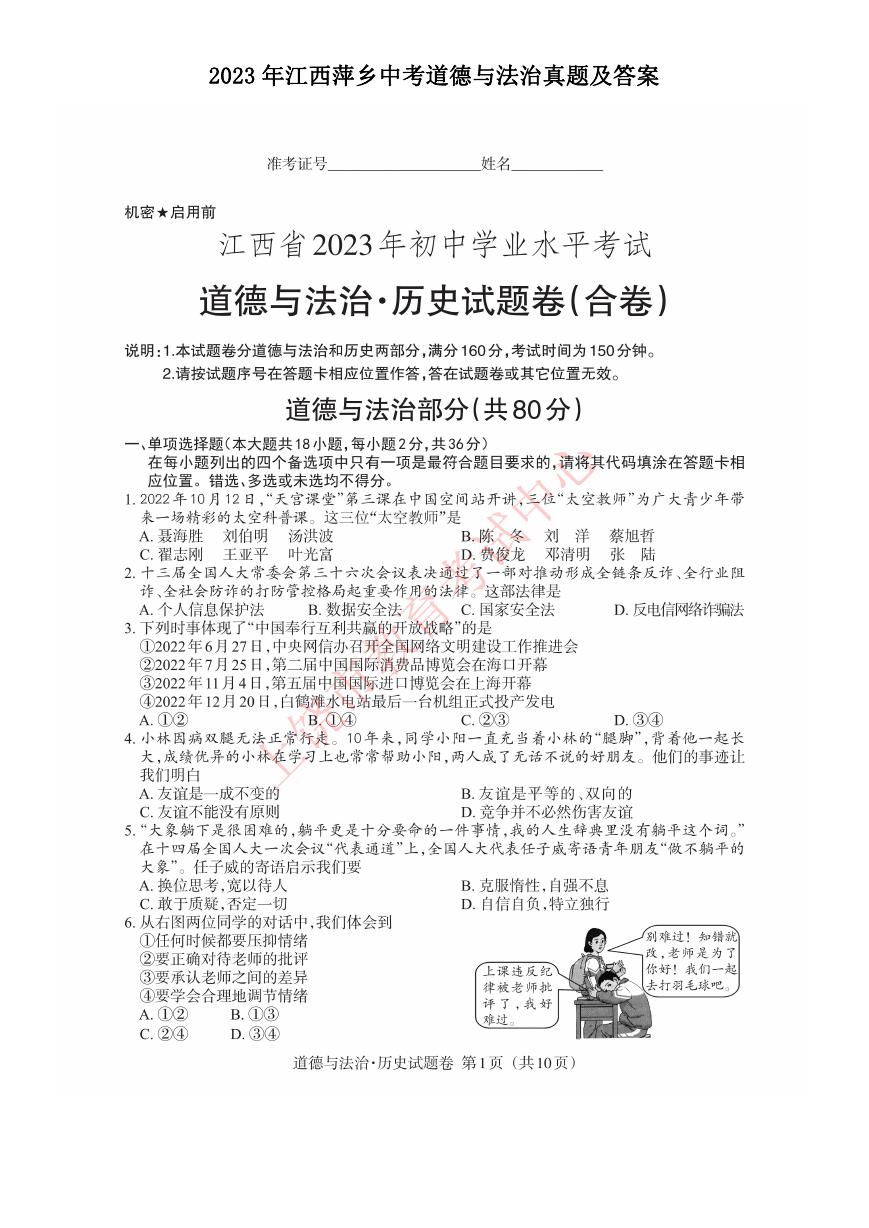 2023年江西萍乡中考道德与法治真题及答案.doc
2023年江西萍乡中考道德与法治真题及答案.doc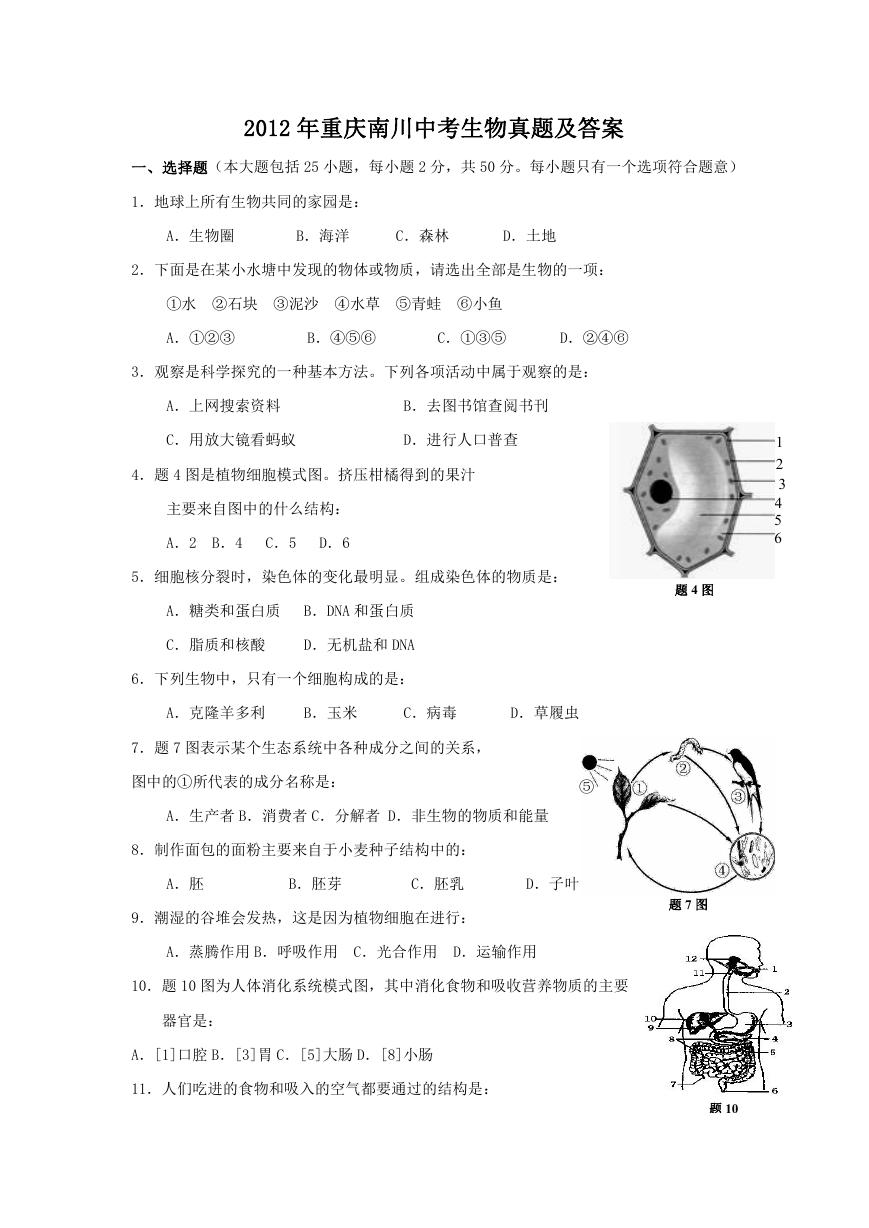 2012年重庆南川中考生物真题及答案.doc
2012年重庆南川中考生物真题及答案.doc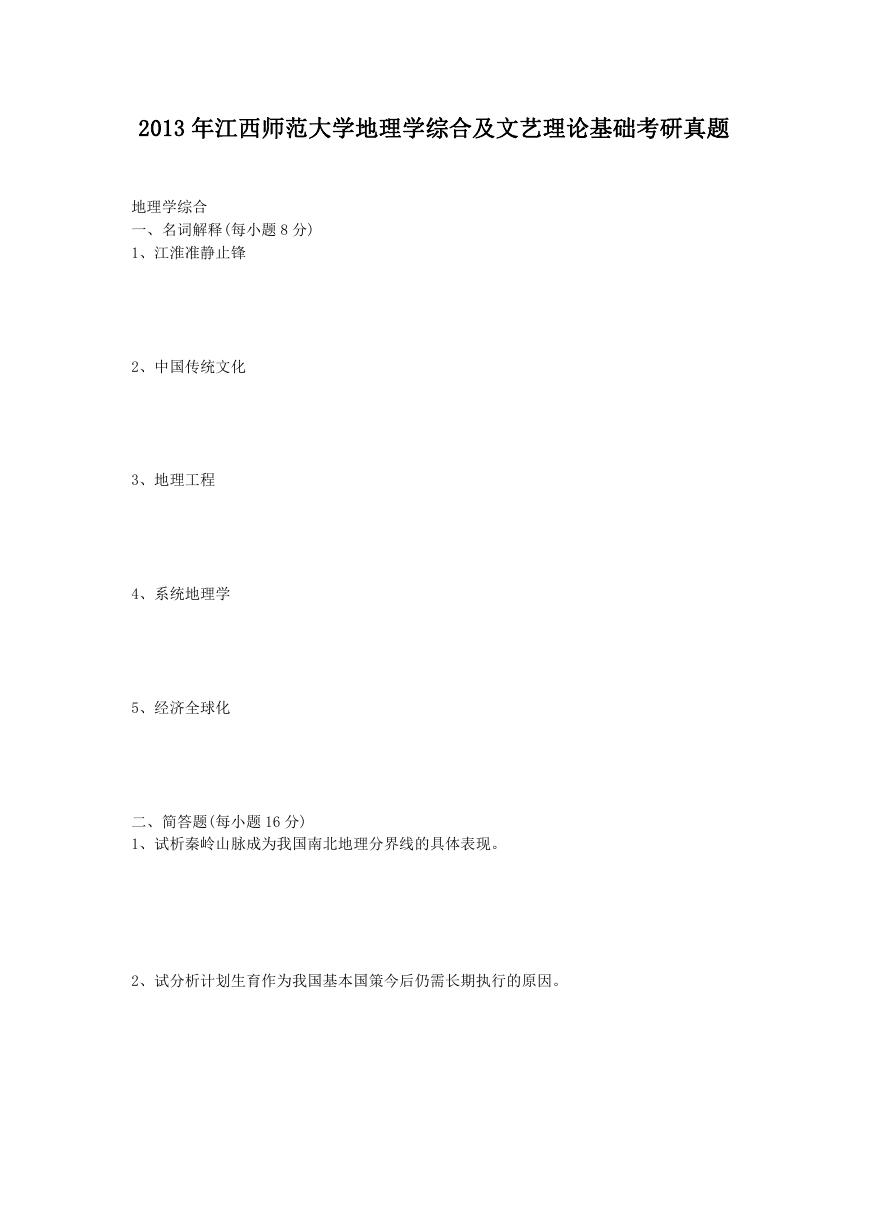 2013年江西师范大学地理学综合及文艺理论基础考研真题.doc
2013年江西师范大学地理学综合及文艺理论基础考研真题.doc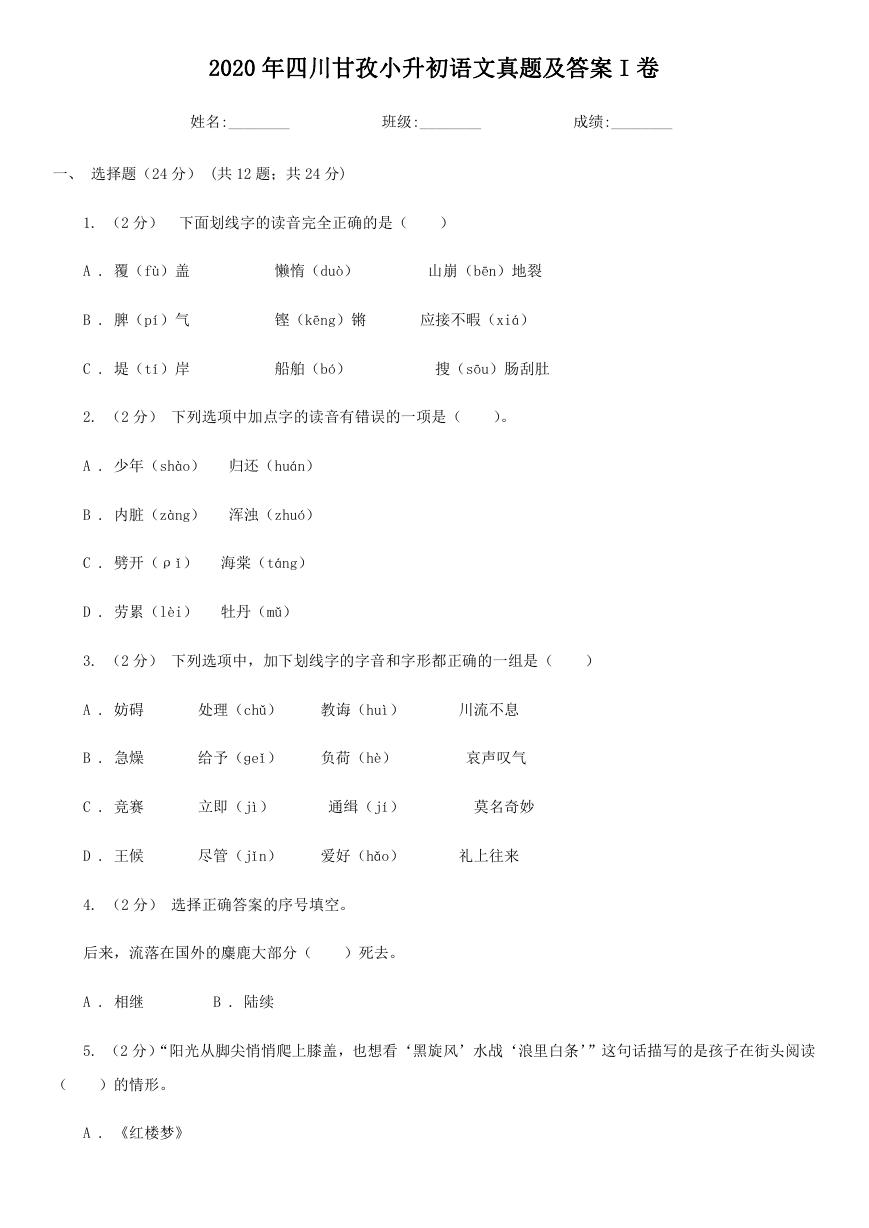 2020年四川甘孜小升初语文真题及答案I卷.doc
2020年四川甘孜小升初语文真题及答案I卷.doc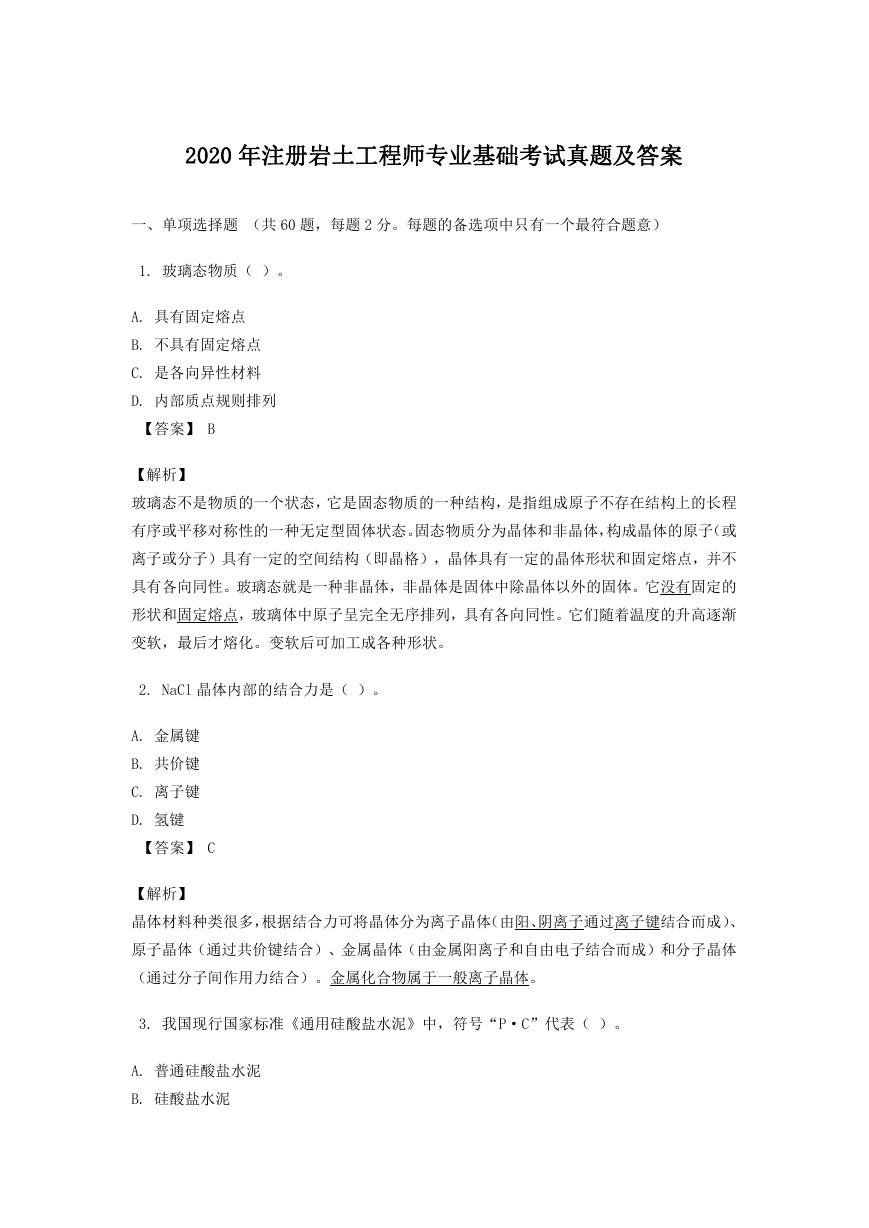 2020年注册岩土工程师专业基础考试真题及答案.doc
2020年注册岩土工程师专业基础考试真题及答案.doc 2023-2024学年福建省厦门市九年级上学期数学月考试题及答案.doc
2023-2024学年福建省厦门市九年级上学期数学月考试题及答案.doc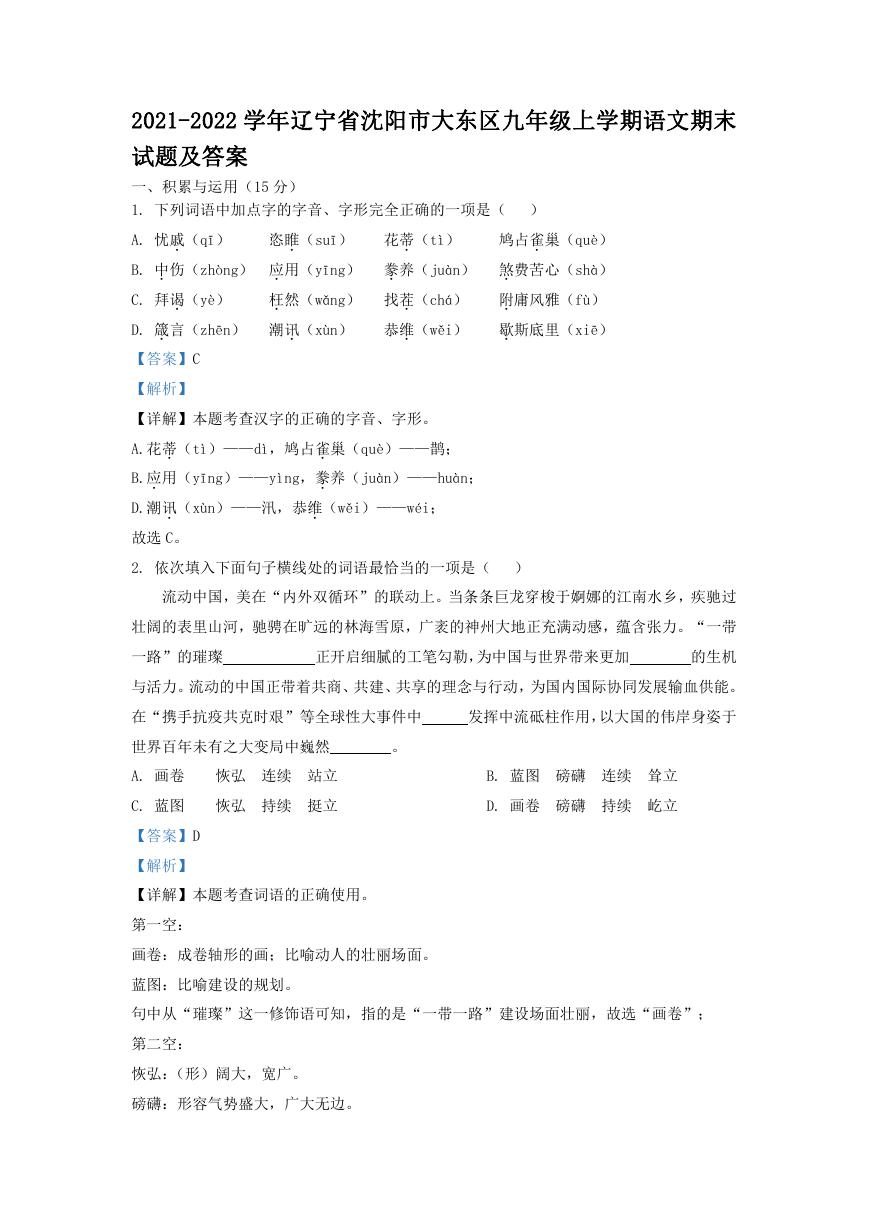 2021-2022学年辽宁省沈阳市大东区九年级上学期语文期末试题及答案.doc
2021-2022学年辽宁省沈阳市大东区九年级上学期语文期末试题及答案.doc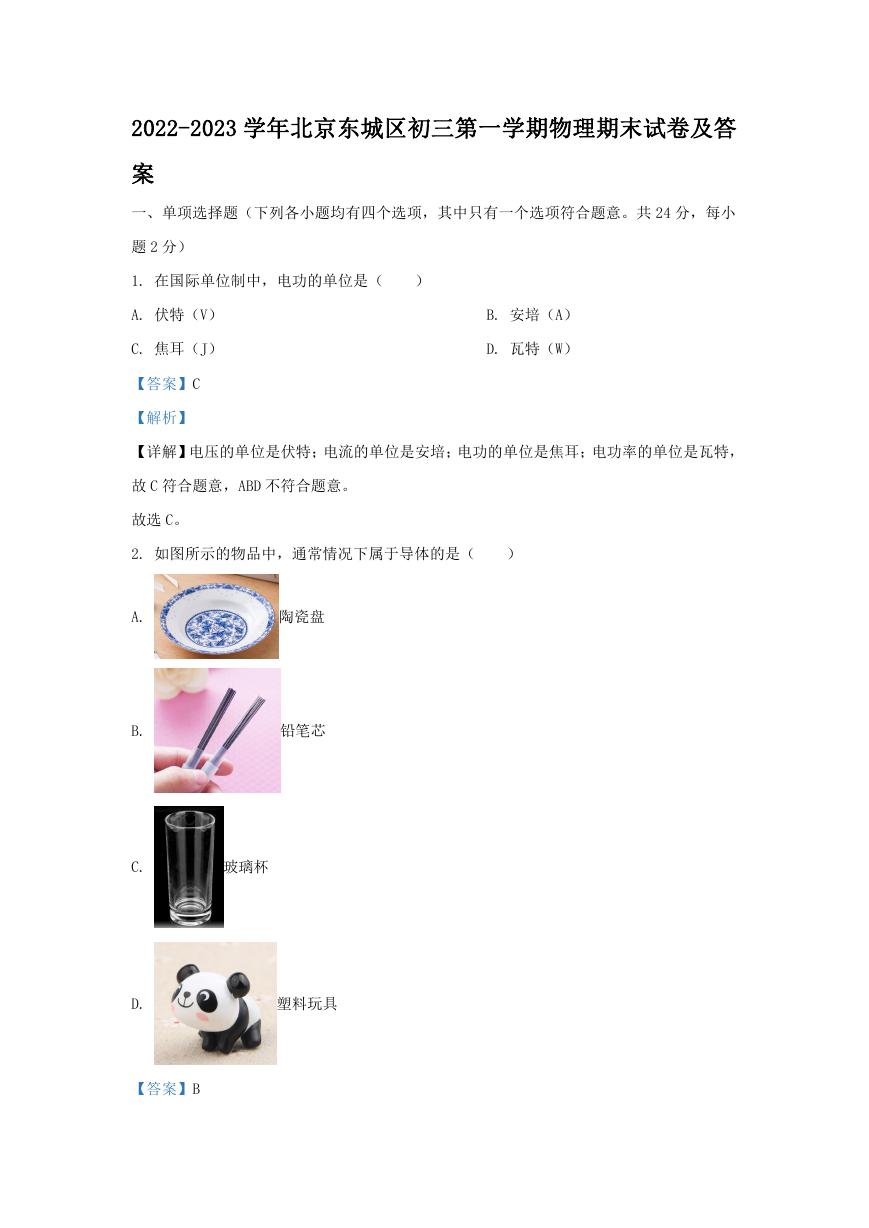 2022-2023学年北京东城区初三第一学期物理期末试卷及答案.doc
2022-2023学年北京东城区初三第一学期物理期末试卷及答案.doc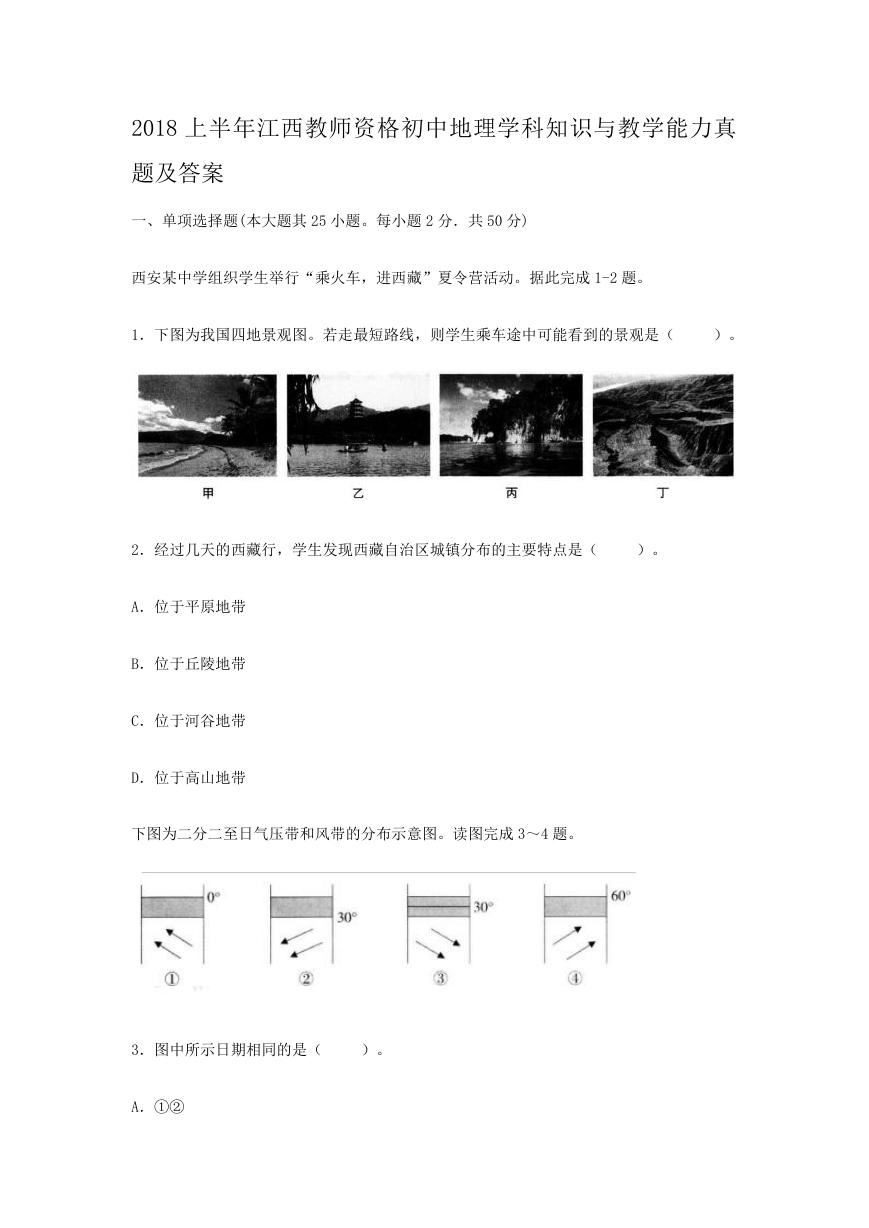 2018上半年江西教师资格初中地理学科知识与教学能力真题及答案.doc
2018上半年江西教师资格初中地理学科知识与教学能力真题及答案.doc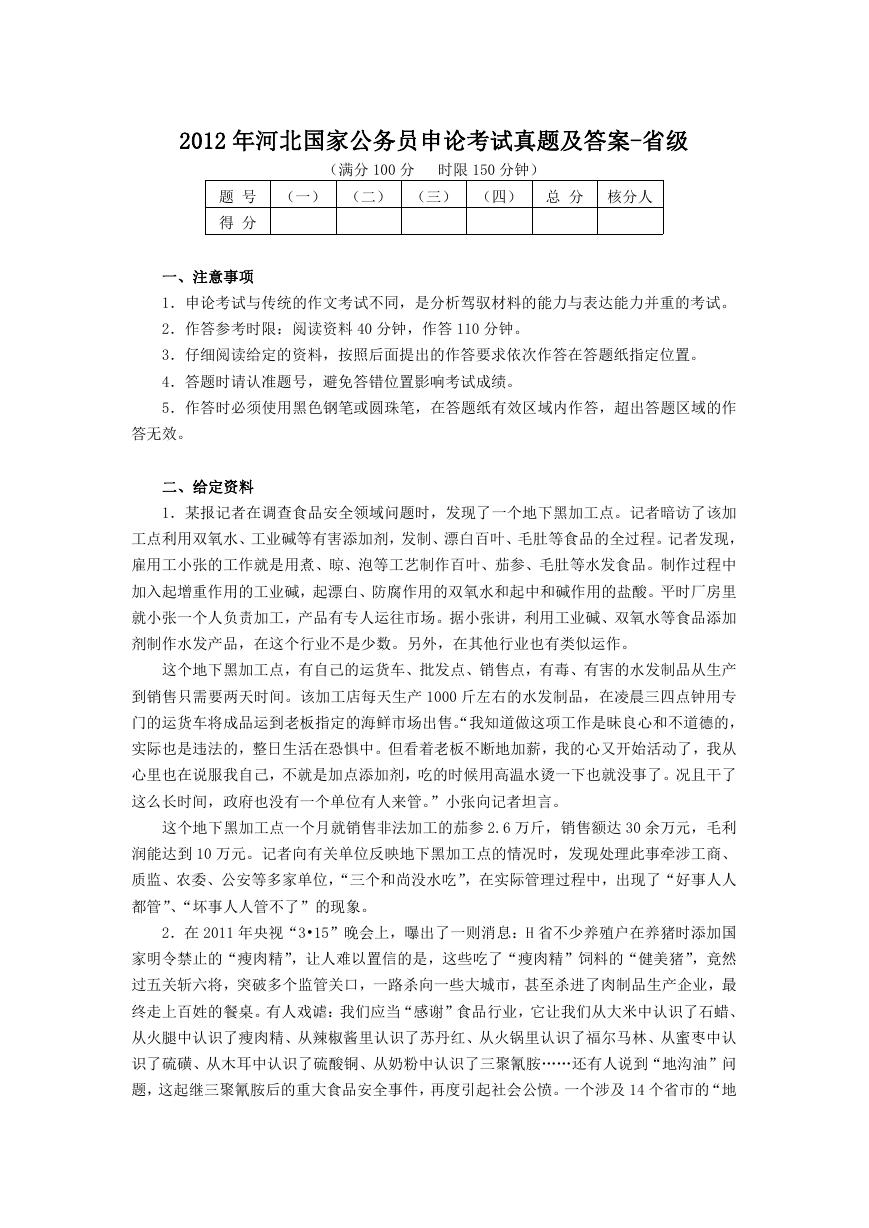 2012年河北国家公务员申论考试真题及答案-省级.doc
2012年河北国家公务员申论考试真题及答案-省级.doc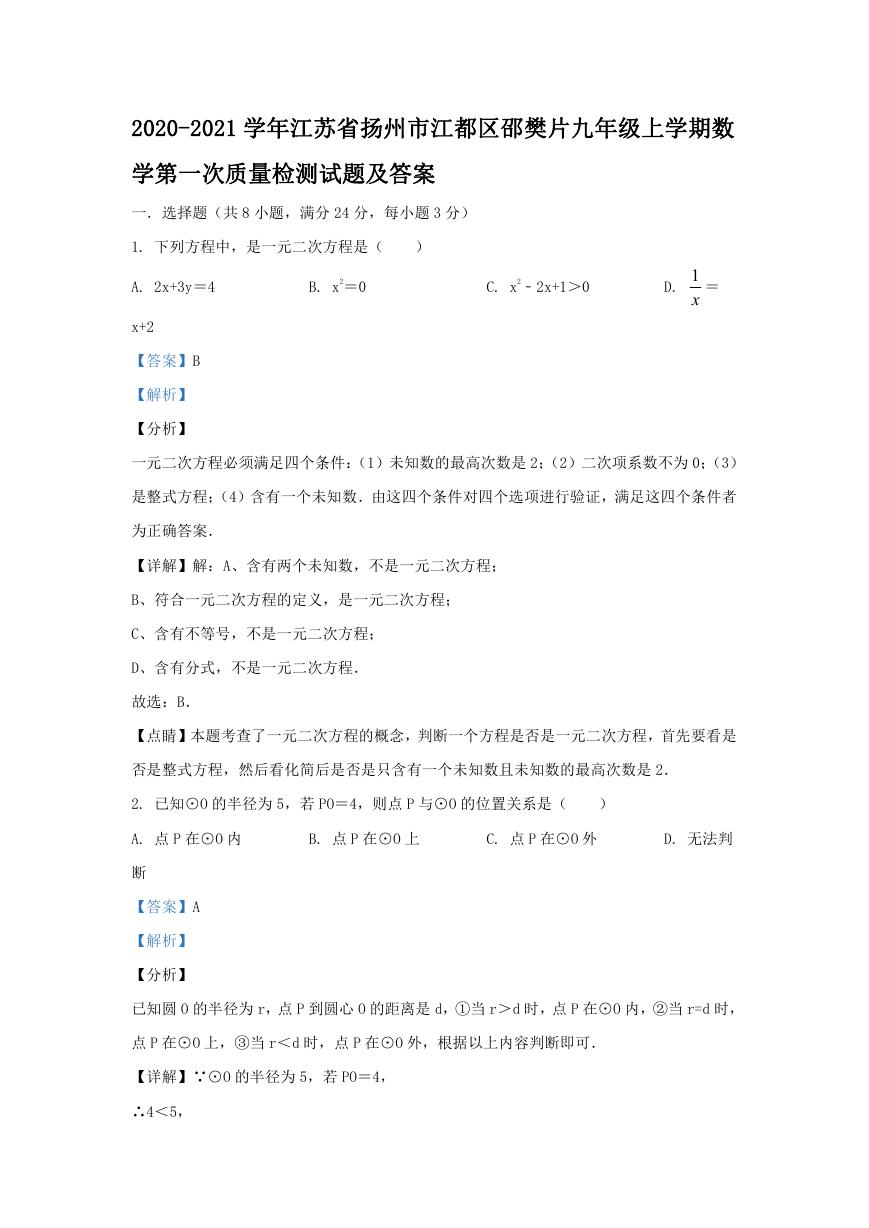 2020-2021学年江苏省扬州市江都区邵樊片九年级上学期数学第一次质量检测试题及答案.doc
2020-2021学年江苏省扬州市江都区邵樊片九年级上学期数学第一次质量检测试题及答案.doc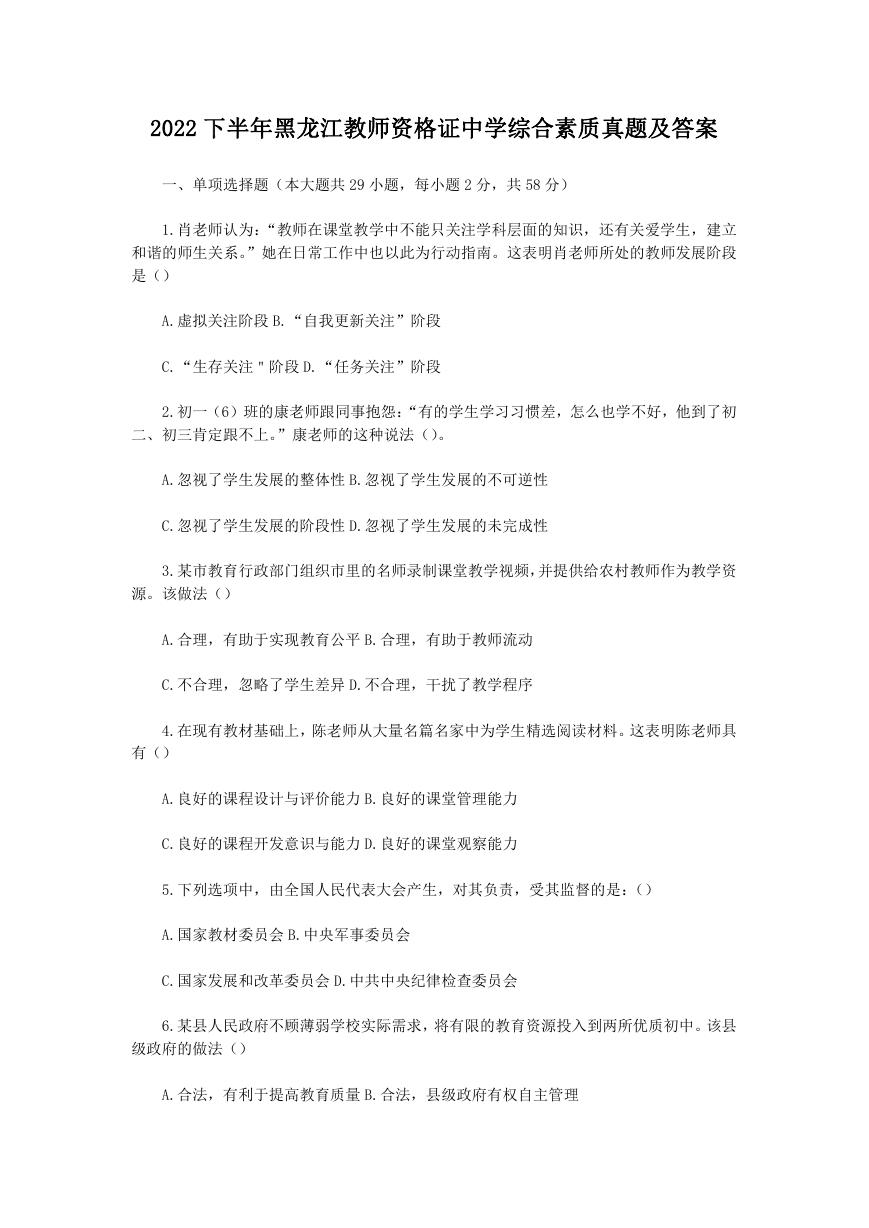 2022下半年黑龙江教师资格证中学综合素质真题及答案.doc
2022下半年黑龙江教师资格证中学综合素质真题及答案.doc